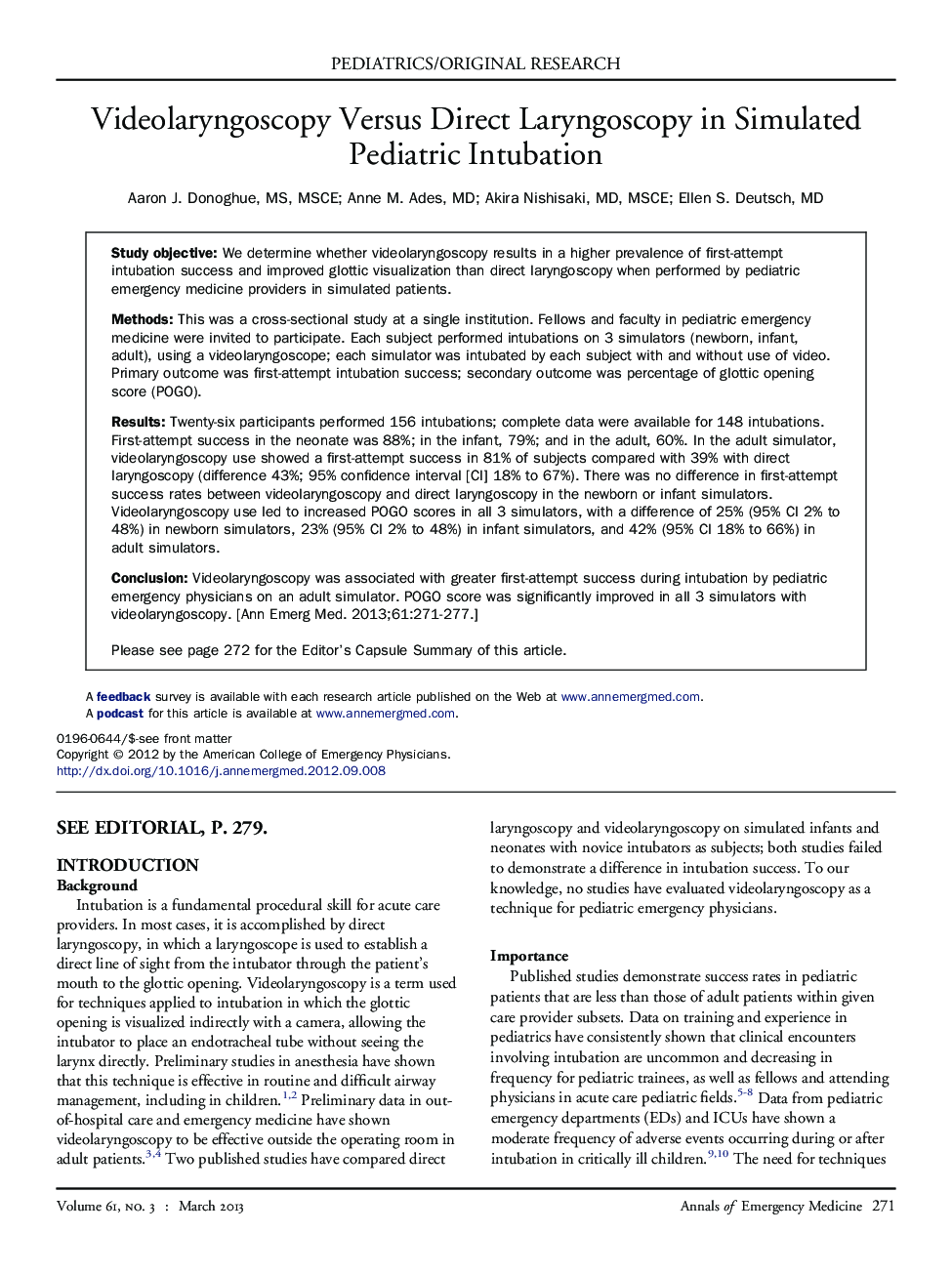| Article ID | Journal | Published Year | Pages | File Type |
|---|---|---|---|---|
| 3230455 | Annals of Emergency Medicine | 2013 | 7 Pages |
Study objectiveWe determine whether videolaryngoscopy results in a higher prevalence of first-attempt intubation success and improved glottic visualization than direct laryngoscopy when performed by pediatric emergency medicine providers in simulated patients.MethodsThis was a cross-sectional study at a single institution. Fellows and faculty in pediatric emergency medicine were invited to participate. Each subject performed intubations on 3 simulators (newborn, infant, adult), using a videolaryngoscope; each simulator was intubated by each subject with and without use of video. Primary outcome was first-attempt intubation success; secondary outcome was percentage of glottic opening score (POGO).ResultsTwenty-six participants performed 156 intubations; complete data were available for 148 intubations. First-attempt success in the neonate was 88%; in the infant, 79%; and in the adult, 60%. In the adult simulator, videolaryngoscopy use showed a first-attempt success in 81% of subjects compared with 39% with direct laryngoscopy (difference 43%; 95% confidence interval [CI] 18% to 67%). There was no difference in first-attempt success rates between videolaryngoscopy and direct laryngoscopy in the newborn or infant simulators. Videolaryngoscopy use led to increased POGO scores in all 3 simulators, with a difference of 25% (95% CI 2% to 48%) in newborn simulators, 23% (95% CI 2% to 48%) in infant simulators, and 42% (95% CI 18% to 66%) in adult simulators.ConclusionVideolaryngoscopy was associated with greater first-attempt success during intubation by pediatric emergency physicians on an adult simulator. POGO score was significantly improved in all 3 simulators with videolaryngoscopy.
